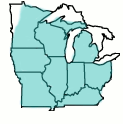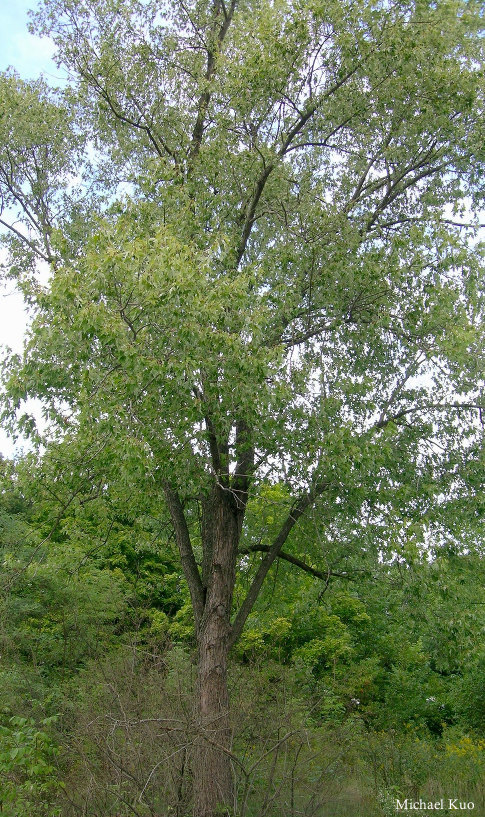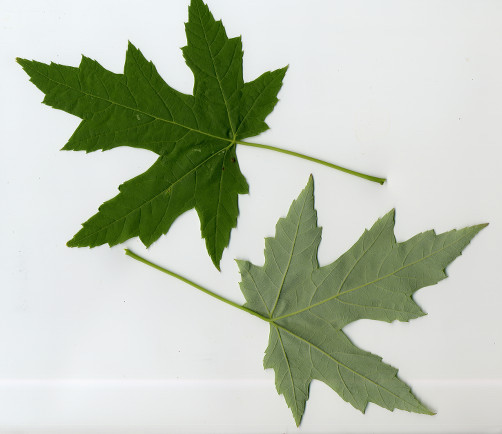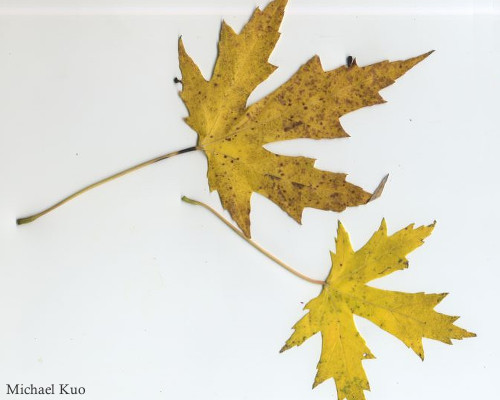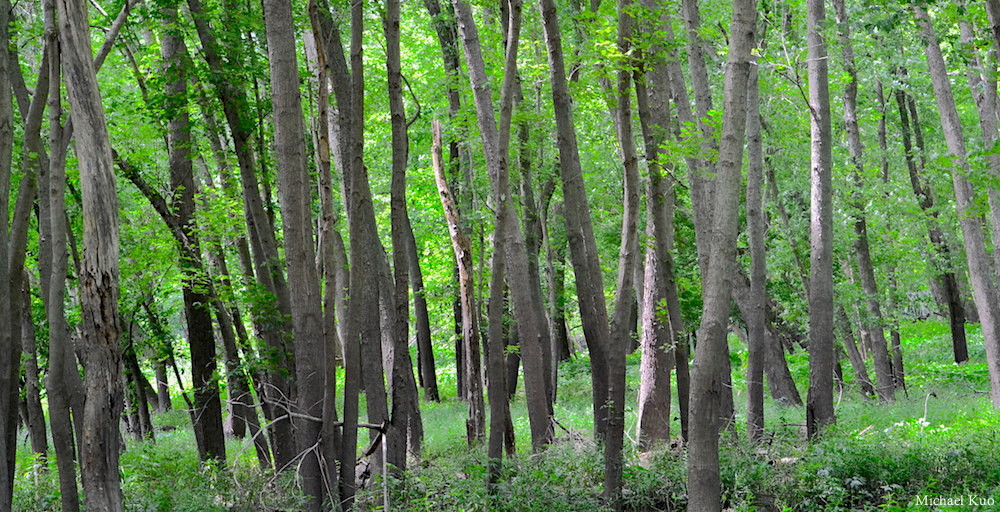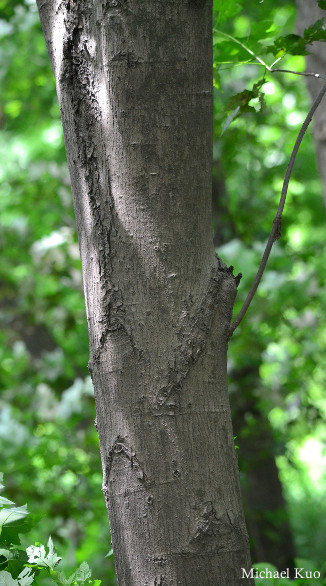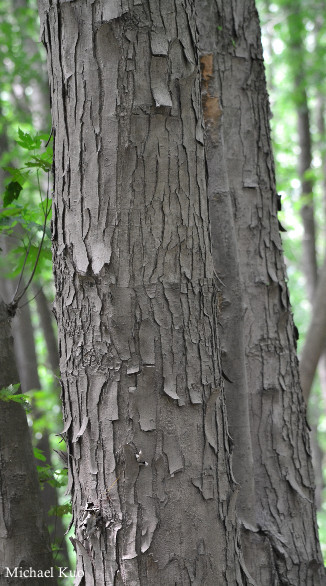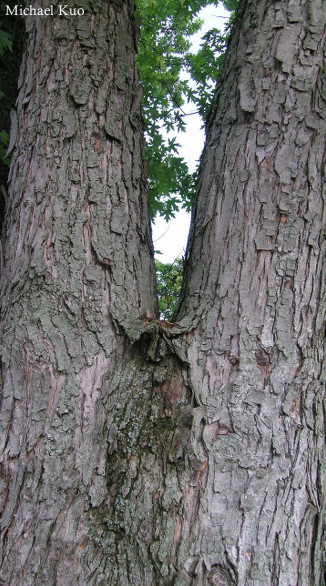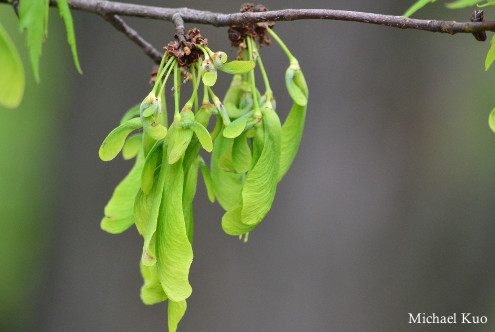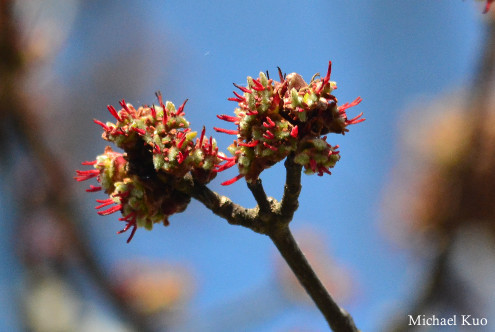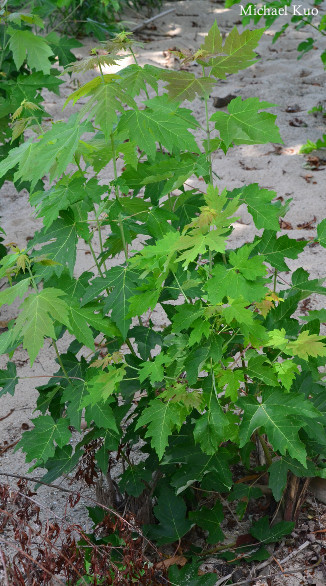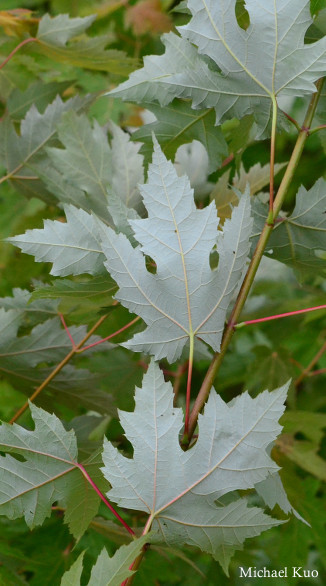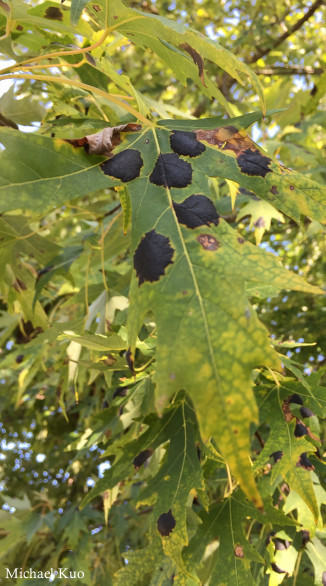 Acer saccharinum (silver maple) |
 |
|
If you want to see silver maples at their largest and finest, the Ohio Valley and watershed is the place to go. Acer saccharinum is a denizen of floodplains and riverine ecosystems, well known to Midwesterners. Its leaves feature the deepest lobe-forming "cuts" among the naturally occurring Midwestern maples, and their undersides are silvery-whitish. Since the leaf-stems of silver maple, like those of aspens and cottonwoods, are somewhat flattened on an axis perpendicular to the plane of the leaf, the leaves twist and turn in the slightest breeze, transforming a green tree into a silver one. Distinguishing features for Acer saccharinum include the deeply cut leaves with silvery undersides and a top lobe that is skinnier at its base than at its midpoint; the red blossoms that appear in very early spring; the large "helicopter" samaras that appear soon thereafter and reach about 2 inches in length; and the distinctive bark, which develops cracks as it matures and eventually becomes scaly—often with the slightest hint of pink in its cracks. Red maple is the only tree that might cause confusion, but its leaves are not cut as deeply and the top lobe is widest at its base. Silver maples turn a clear yellow color in the fall, unlike the other Midwestern maples, which turn orange and red. Over winter the flower buds are round and red, and the twigs, when crushed, have a foul odor. In Midwestern towns silver maple was—and still is—a popular tree, planted along streets and in parks. Many of these trees were planted between 100 and 150 years |
|
|
|
|
|
|
|
|
|
|
|
|
|
|
|
|
|
|
|
|
References: Harlow 1946, Peattie 1948, GN Jones 1971, Miller & Jaques 1978, Kricher & Morrison 1988, Preston 1989, RL Jones 2005, Mohlenbrock 2006, Kershaw 2007, Voss & Reznicek 2012, Mohlenbrock 2014. Kuo, Michael & Melissa Kuo (September, 2017). Acer saccharinum (silver maple). Retrieved from the midwestnaturalist.com website: www.midwestnaturalist.com/acer_saccharinum.html All text and images © , midwestnaturalist.com. |
